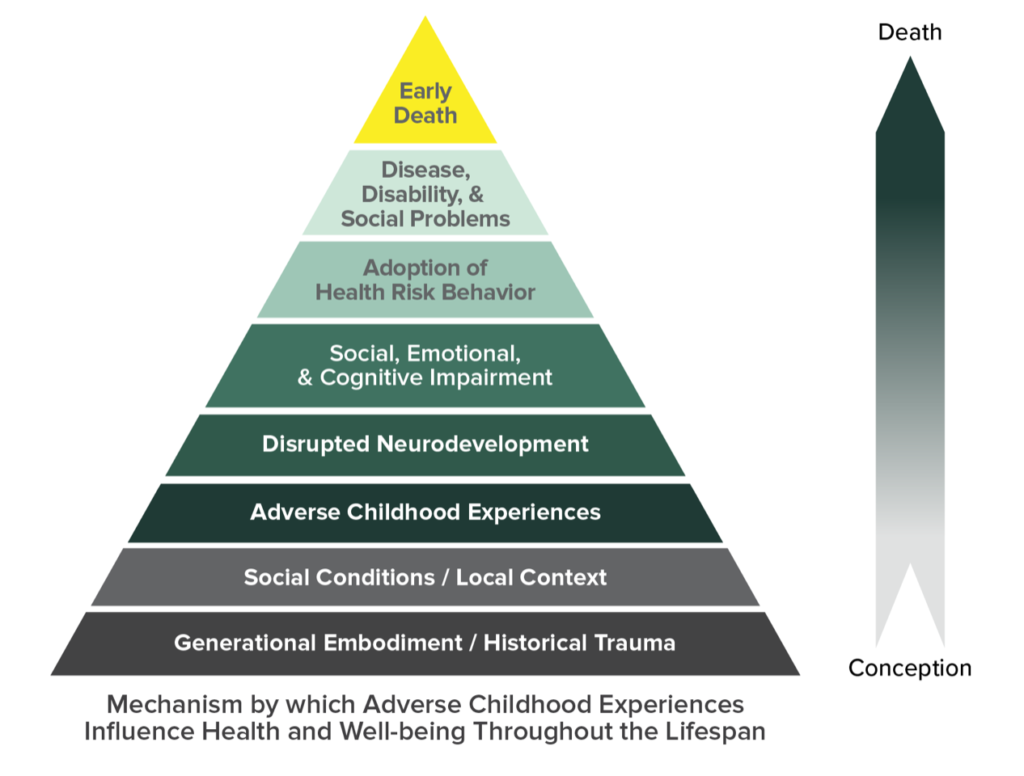Adverse Childhood Experience (ACE) Study
The ACE Study (Centre for Disease Control & Kaiser Permanente, 1995-2011)
- This study took place over 10 years involving 17,000 participants from the middle class US population with health insurance.
- People enrolled in a health plan were asked about Adverse Childhood Experiences which included: neglect, all forms of abuse; violence against mother; poverty, divorce or living with household members who were substance abusers, mentally ill or suicidal, or ever imprisoned.
- Participants completed a 10 item trauma category checklist and received a score out of ten based on how many types of trauma they had experienced.
Some findings:
- 1 in 4 were exposed to 2/10 categories of trauma
- 1 in 16 were exposed to 4/10 categories of trauma
- 22% of participants were sexually abused as children
- 66% of female participants had experienced abuse, violence or family strife
- Women were 50% more likely than men to have experienced 5 or more categories
- >66% of people in substance abuse treatment report childhood abuse or neglect
- 80% of child/adolescent suicide attempts are attributable to Childhood Adverse Experiences
- A variety of adult adverse health outcomes were strongly associated with the number of ACEs an individual had experienced, such as depression, cancer and heart disease.
- Lung cancer and heart disease were associated with ACEs independent from traditional risk factors.

In an Alberta study on Adverse Childhood Experiences it was concluded that 56% of the population they surveyed (n=1207) had at least one ACE score. Having one ACE score increased the probability of experiencing another one by 84%. (MacDonald et.al, 2015)
In a Nova Scotia study (Lunenburg) 55 % of participants were exposed to two or more ACEs and 31 % were exposed to 4 or more. (Ross et al, 2019)
For more information about the ACE Study Visit their website.
For more research resources please visit the Resource page.



